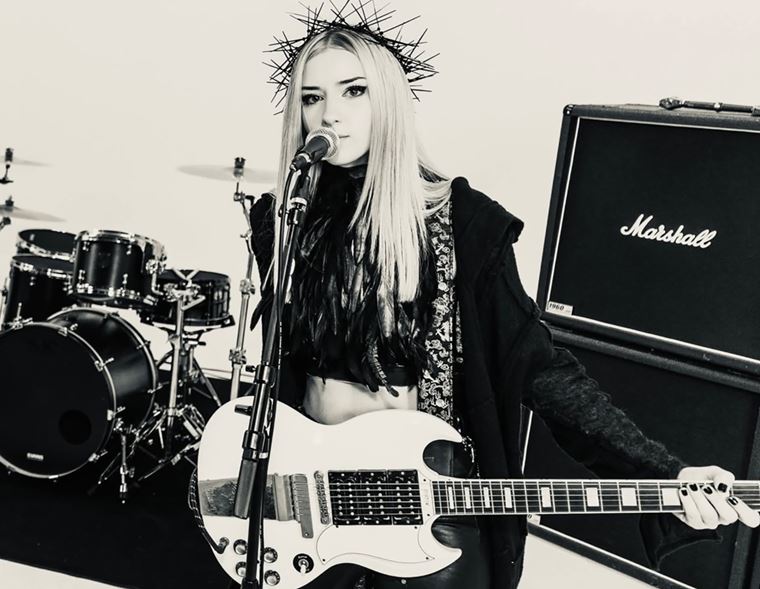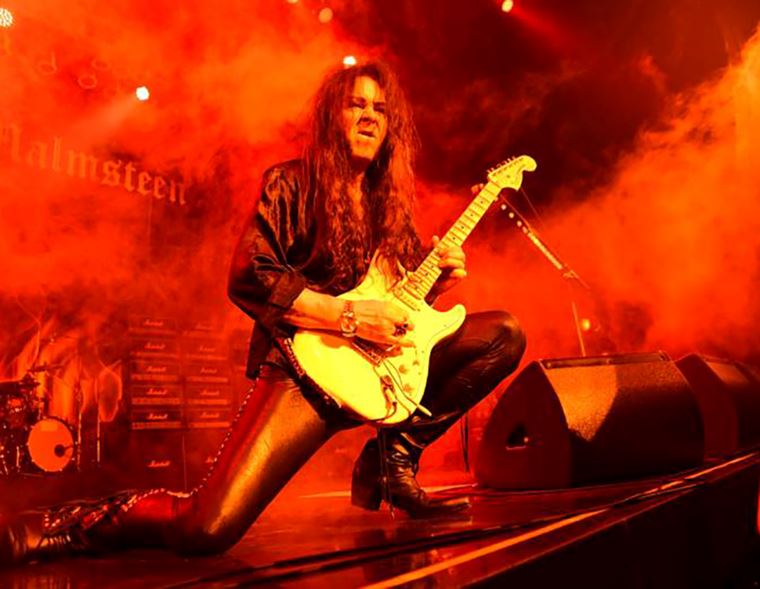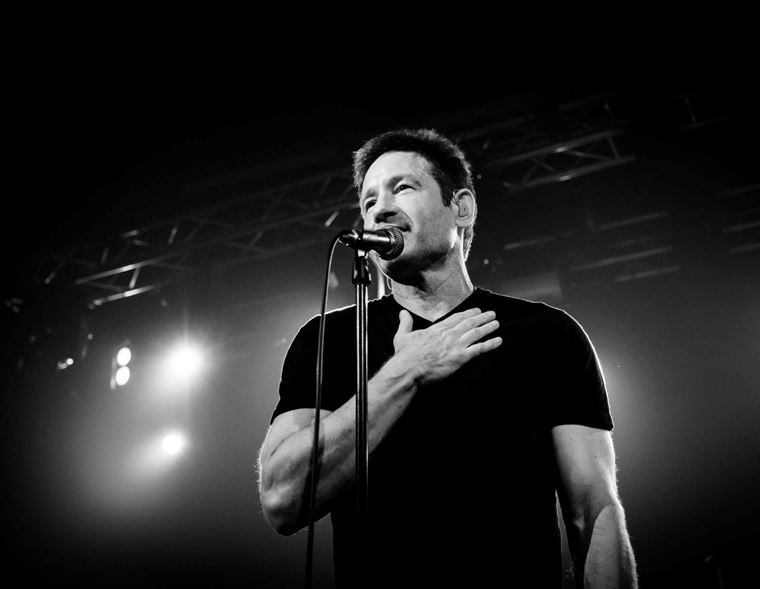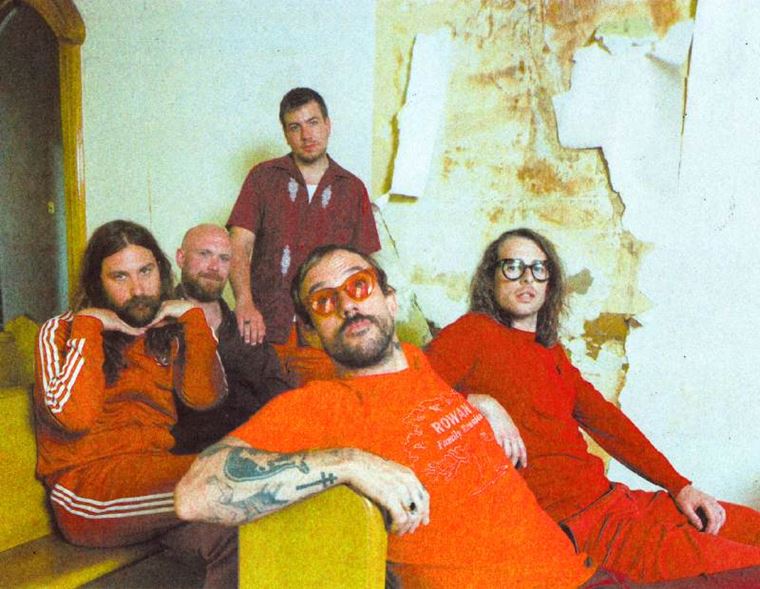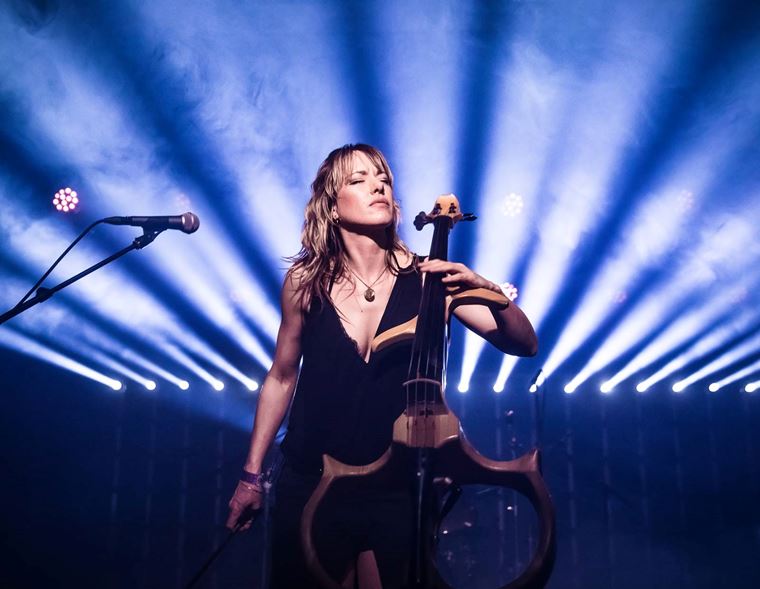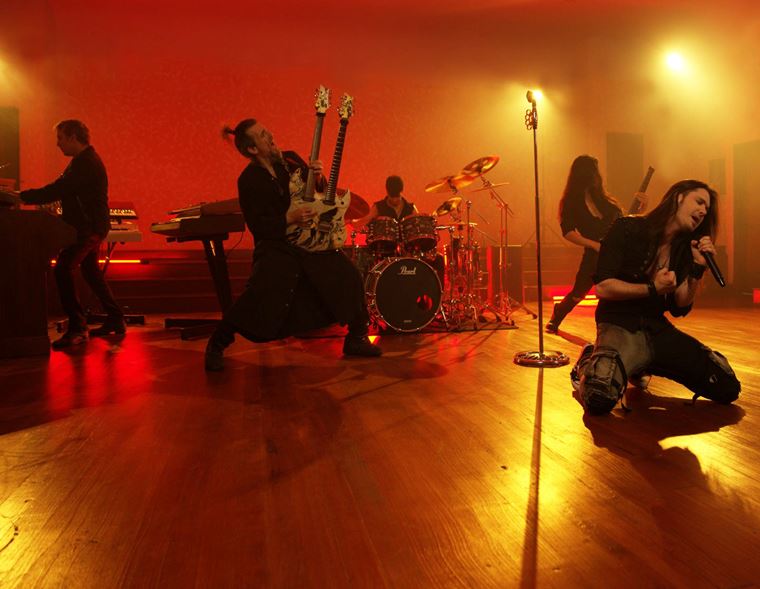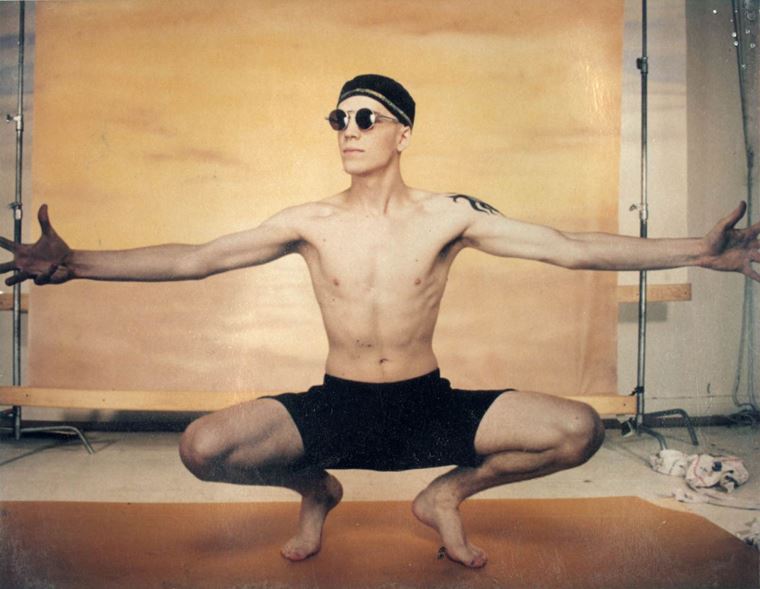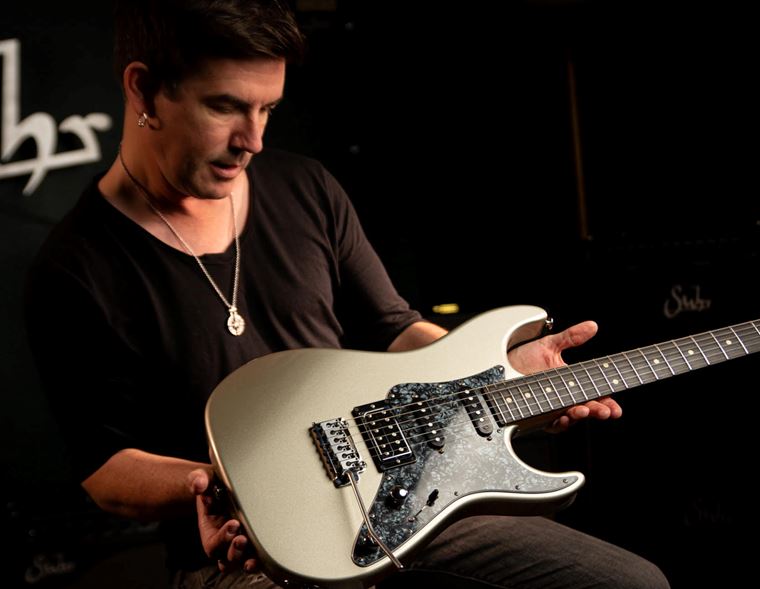"I generally like things on ten, full bore, all the way up, hammer down. Full speed ahead!" KENNY WAYNE SHEPHERD talks about his NEW album!
Published on 10 November 2023
For nearly thirty years now, Kenny Wayne Shepherd has been absolutely tearing it up. The blues rock legend got an early start for sure, touring as a signed artist whilst still in his teens, and he’s built on that early promise to become a worldwide household name for fans of blues, rock and guitar playing.
Next week sees the release of his long-awaited new record, Dirt on My Diamonds Vol.1, and I was very lucky to be allowed some time with Kenny on Zoom to chat about it all. I definitely wanted to know all about the new songs and his top tier guitar tone, but there were other areas I felt compelled to venture into, not least the small matter of him having played Jimi Hendrix’s Woodstock strat!
Kenny was thankfully up for all of my enquiry lines, and even at the end of a long day’s promo duties, he took the time to give me properly considered thoughts on everything from string gauge to the scarcity of vintage Vox wah pedals!
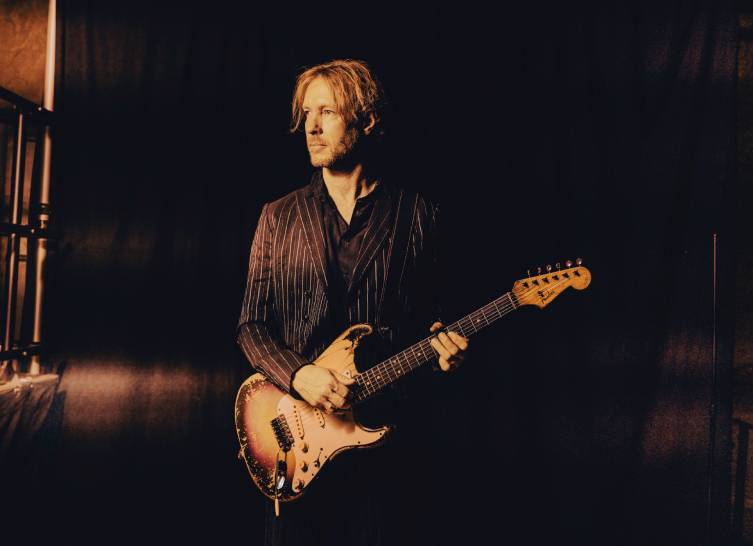
(Photo: Jim Arbogas)
Contents
Kenny Wayne Shepherd Interview
Guitar Tones: Dumble Amps and Vintage Wahs
Jimi Hendrix’s Woodstock Stratocaster
Kenny Wayne Shepherd Signature Stratocaster
Kenny Wayne Shepherd Interview
Guitarguitar: I guess the first place I would love to talk about would be your writing process. Are you one of those guys who has ideas that you stick on your phone and collect, or is each new album cycle a clean slate?
Kenny Wayne Shepherd: I just looked the other day in my phone and I have 732 ideas recorded (laughs) I’m not sure they’ll all end up turning into songs before I die, but there’s 732 ideas right now waiting to hopefully see the light of day.
GG: Wow! So do you periodically take a morning and go through them for jewels?
KWS: Yeah, exactly. I go through them and figure out which ones are speaking to me at the time, because obviously there was something about them when I recorded them in the first place, right? But when I consider what direction I’m gonna go in for a new record, those things will just pop out at me, you know? Some of them will say ‘Hey! Now’s the time!’ And then the real challenge then becomes - because I tend to favour co-writing with other people because everyone has different strengths they’re gonna bring to the table - so then it becomes, okay: based on this idea that I have, who out of the people that I work thing do I think is most appropriate to write this song with? To get the right end result? Because that in itself is an interesting question to pose and to try to figure out. You gotta have the right guys write the right songs, otherwise it doesn’t come out right.
GG: Certainly! Have you had situations where you’ve co-written, and it’s been a successful venture but maybe it doesn’t fit the album? Maybe revisit it years later, does that happen as well?
KWS: Yeah, it’s happened. It doesn’t happen a lot, but for example, the song called Dark Side of Love that was on the 2011 release we did called How I Go, that song was actually originally written for the Trouble Is record back in 1997. We recorded it then but it didn’t make it on the record, it wasn’t right for that album. It sat for 14 years and then we pulled it out, and I think it made a great addition to that particular album.
GG: Interesting! Proof enough that you should never throw anything away. So, when you’re writing your songs ordinarily, I’m presuming you begin on the guitar? And if so, how far into the process, generally speaking, is it before you start thinking about vocals? Is that way down the line?
KWS: It’s totally different for every song and there’s actually some songs where I’ve had the song start with a vocal melody or song title or whatever. I’d say 95% of them start with a guitar idea: a groove or a lick. Best of Times, on this new record, actually the vocal line for the verses that Noah sings, that was actually a guitar part that I had come up with for a song idea, then we realised that that actually should be the vocal melody. I guess, technically, that song started with the vocal line!
"I just feel like there's a beauty in it's simplicity, and also it's the root of all popular music" KWS on the blues
GG: Aha, okay! And in terms of your lead parts - and again, I’m sure there’s a bunch of answers but it’s more generally - how ‘written in advance’ are your solos and leads, or how improvised might they be?
KWS: Well it’s never written in advance. It’s always spontaneous. Basically, what happens is: we’ll be tracking the song and sometimes I’ll just play rhythm through the solo section, save it for later, but if I feel inspired then I’ll play the solo in the moment. Every once in a while we’ll get something where it's one take and it's great the way that it is, but oftentimes I’ll play something and there's parts of it I like, or maybe I get a little off-track or whatever. That’s when it becomes more that you’re developing something.
It always initially begins with a completely clean slate. I have no preconceived idea of what I’m going to play going in there, and then I start playing something and either go ‘no, that’s not right at all’, or I go ‘you know, I like that part and I like that part but I don’t like everything in between it, so what do we do to bring those together?’
GG: Right, and then when you have the final recorded track with the solos, how close do you tend to stick to those parts when you play live? From what I’ve seen on Youtube and so on, you tend to remain relatively faithful to the recordings, right?
KWS: Well it just depends actually. It depends on the song and it depends on where we’re at on the tour. So, when we start playing these new songs in the show, they’re gonna be very very close to the sound of the record. Then over time, things can evolve: new parts might come in, or we might realise, ‘Hey, this song is actually a great platform for an extended solo opportunity for everyone to get it on some soloing’.
A perfect example of that would be the song I Want You from the Traveller album. I think it’s four and a half minutes long, maybe five minutes long on the record but it’s become an eight and a half minute long song live because it’s just such a great platform for everyone to have their moment to shine. So things will evolve in the live show, and some will stay very close to the record always. Like, Blue on Black is generally very close to the sound of the record because that’s what made that song so special. Any time we tried to veer off course, it sounded like we lost the magic of that song. There’s been several times over the years where we’ve tried to drift away from the sound of the record and I see a Youtube video and go ‘Yeah, this is not how it’s supposed to be!’ and we have to hit the reset button to get back to the way it sounded on the record. You just have to be able to realise and acknowledge when that’s a good thing and when it’s not a good thing, and make decisions based on that.
Guitar Tones: Dumble Amps and Vintage Wahs
GG: Good, yeah. Well, talking about solos, you’ve always had an excellent palette of great Blues Rock tones and this record’s no different. Let’s talk about guitar tones! Did you have a particular ‘main rig’ for this album?
KWS: No, I’d have a rig set up for when we were tracking and then generally when it comes time to do any guitar solo overdubs - whenever necessary - then we’ll pull out all the amps, you know? (laughs) Just line them all up in the big room. But basically, the amps that were used on this were all the Dumble amps that he made for me, so: the little tweed Deluxe that he called the Tweedle-Dee Deluxe, and then I had my Ultraphonix Bandmaster then I had the Slidewinder Bassman and the Rockphonix Pro Reverb and THEN I also had a couple of blackface Vibroverb Deluxes that he did for me that he called the AC763. I used those as well.
So, depending on the solo or the song, we’d have five or six amps lined up, mic’d up and you can choose the amp you wanna feature or create a blend of multiple amps to get the sound you think is the most appropriate for that particular solo on that song.
GG: Sure,yeah. Dumble is such a rarefied brand, so much so that I’ve never actually seen one in the flesh, so to speak! So this could be something of a sacreligious thing to say (laughs), but do you ever complement the Dumbles with overdrive pedals?
KWS: Yeah! He knew that I used pedals so he built the amplifiers for me around the idea of knowing that I’d be hitting these in the front end with some sort of overdrive. But the amps, each one of them has a fair amount of natural overdrive built into them, and sustain and things like that, but you know, he knew that I’d be using pedals so he built them to be able to handle that. I usually like to set my amps to be on the verge of breaking up, and then use my pedals to send it over the top.

(Photo: Mark Seliger)
GG: Cool, and what are your overdrive preferences?
KWS: I usually use a TS-808 Tube Screamer, and Analogman King of Tone overdrive and a Klon. Right now on the board I’m using the reissue Klon, the red one. You know?
GG: I do, the KTR one.
KWS: But I have an original one as well. So all the pedals that I have, I have the original vintage versions of them also. I’ll bring all the vintage stuff into the studio: the original Klon, the original Univibe…but then I’ll also use the Analogman stuff too and, y’know, he’s been making his stuff for a while but I wouldn’t consider it to be vintage, right? And the original Clyde McCoy wah from the sixties, I’ve got a couple of those. We bring out all the good stuff in the studio, and sometimes on the road too. I have three pedal boards going right now. Each one has the reissue one of those pedals on the board.
GG: Sure! And before we talk about a few specific tones from the new record, since you’ve got the red KTR Klon and the actual Klon Centaur - presumably one of the ‘archer’ ones - do you hear a huge difference between the two?
KWS: No, you don’t hear a huge difference between the two, no. I mean, you can hear ‘a’ difference but it’s not a huge difference. It’s kinda like some of these guys that are creating the ‘McKlones’ of things: you can hear a difference but at the end of the day, in the studio you can really put things under a microscope. It’s a very controlled environment and every little thing, you can hear the effect it has on the sound. You can move the mic from here to here and you can hear the difference. But for live performance especially, when your amp is turned up to 8, 9 or 10 - or 11, depending on the amp! - and it’s going through a PA system that’s freaking 110 decibels and people’s ears are bleeding…yeah, you’re not really gonna notice that (laughs).
You just need to use the tool that’s gonna give you what you need to complement what you’re doing and get you to that next level that you’re trying to accomplish when you’re soloing. The miniscule difference between the KTR Klon and the original Klon is not gonna be the deal-breaker on stage. In the studio? Yeah, if you wanna go down the rabbit hole, certainly.
"You just need to use the tool that’s gonna give you what you need to complement what you’re doing and get you to that next level."
GG: Fair enough! And good to know too, since most people don’t have both examples to hand! I’m interested in your lead guitar voice and the way you control it. Are you one of those guys who works the volume knob on the guitar to get different tonal flavours?
KWS: Sometimes, but not a lot. Live, I will because it’s necessary to work with the dynamics of the band. We break everything right down so you wanna roll the volume back, but I would say I generally like things on ten. (laughs) Full bore, all the way up, hammer down. Full speed ahead!
GG: You can always turn it down, right?
KWS: Yeah!
GG: So yeah, some sounds on the new album that caught my ear. There was the wah wah sound on Sweet 'n' Low: that is a fantastic sound! It’s so pronounced sounding! Is that your OG Clyde McCoy wah?
KWS: Yeah. Yeah. I will say, man: It’s really hard to find. That and the Univibe are the two most difficult pedals to reissue and get anywhere close to the sound of an original. The overdrive stuff like the TS-808 reissue pedals are pretty great, they’re pretty close, comparatively and like I said, the difference is not that massive, right? But when it comes to an original Vox Clyde McCoy - a good one - versus a reissue, it is like NIGHT AND DAY difference. It is so hard to find one that is anywhere in the ballpark of the original. The same for a Univibe, because the components of the Univibe - the lightbulb and the things that see the amount of light that’s put out by the light bulb and translates that into a sound, all of that stuff - it’s incredibly challenging and most of the Univibe pedals don’t even come close to the originals. But yeah, that was the original Clyde mcCoy Vox!
GG: Sweet! It’s good to know; that was a particularly good sound and I wondered if you'd done something clever in post-production to make that sweep so aggressive, but it’s just the pedal!
KWS: That is the pedal, the guitar and the amplifier and that’s everything working harmoniously together, man. It’s like, you get all those old capacitors and resistors, all those things man, the sum of all those components and you put the instrument in somebody’s hands, it’s like: that’s what gets you that sound.
GG: It’s a good gumbo! And the other one I wanted to mention was Bad Intentions. To my ears, there’s a kind of…I’m gonna say it’s an Octavia sound, am I close?
KWS: No, so there’s two things that you’re hearing. I really like that sound because it’s just reckless abandon, right? Part of it is the amplifiers, because of the gain that’s on tap with the amps. Part of it is, one of the amps has this thing called ‘tone cry’, so when you play certain notes, the speaker cone resonates in a certain way where it kind of creates the illusion where you hear almost an octave to the note, right? And then, the pedal that I’m using is the Analogman Bi-Chorus pedal. I’m using one side of that pedal - it’s a chorus set on a very slow speed - and so that’s giving a little bit of a pitch shift ever so slightly as well. So all those things basically are what’s giving me that sound.
GG: Brilliant! It’s such a great sound. And since we were talking a second ago about studio versus live, when you play this song live, how are you gonna get that sound?
KWS: I mean I have all the same equipment out here! I use the same things in the studio that I use on the road.
The Legacy of Blues Rock
GG: Cool, that’s wicked! Slight Tangent here, but I’m looking for your opinion. Blues rock: you are one of the big hitters. It’s a genre that, if anything, is even bigger and more popular than when you first came through in the mid 90s. There’s Joe Bonamassa and all these people, and to me you’re one of those artists who is responsible for making the genre what it is today.
So, what is it about the blues - or blues rock, however you want to determine it - that makes it so perennially popular at all times across the world?
KWS: I don’t know, I just feel like there’s a beauty in its simplicity, and also it’s the root of all popular music. I mean, if you trace the family tree of music, you look at what’s popular today and what came before it. You trace it all back, you're inevitably gonna find your way back to blues music, you know?
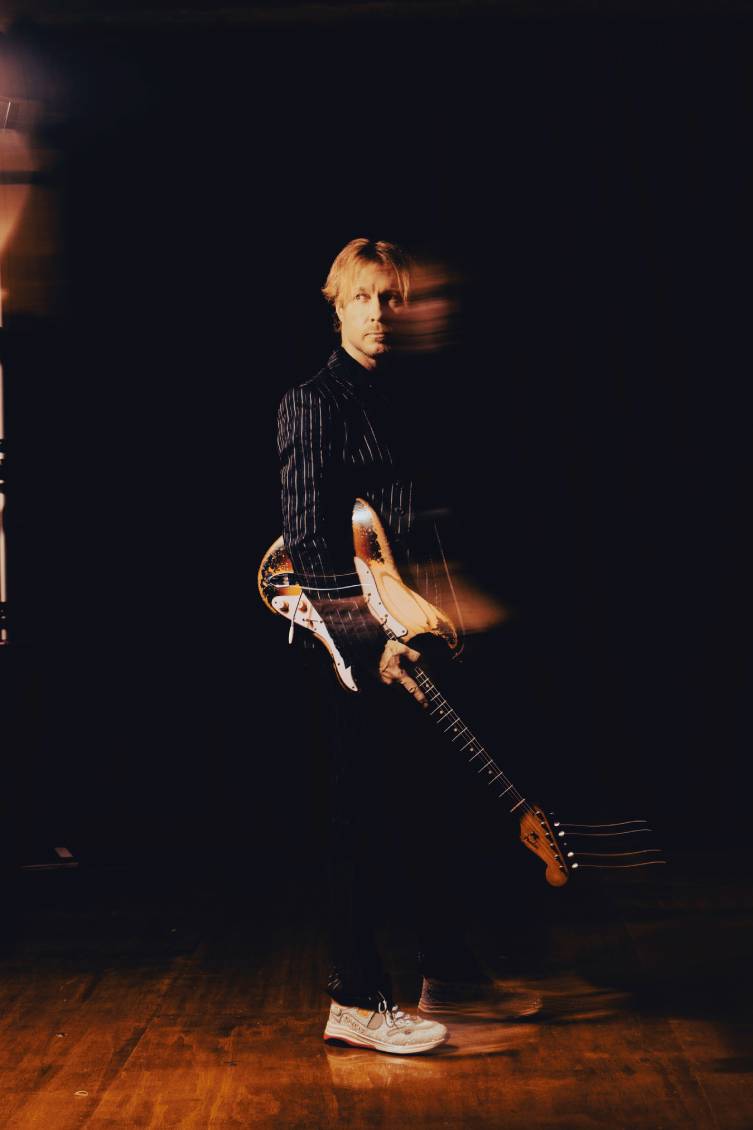
(Photo: Jim Arbogas)
But it’s also the emotion that’s supposed to be put into the music that resonates with people regardless of age and stuff like that. It’s certainly not as popular as pop music, but the beauty of this kind of music is that it has staying power. Pop music is what’s popular at the moment, and usually that stuff lasts for a cycle and then that’s gone. The next sound of pop music comes in, so if you’re gonna be a pop star, most pop stars ride the wave of what’s popular at that time and then once everybody moves onto the next thing they leave you behind.
In this kind of music, my career’s been going on thirty years now, you know what I mean? People are still listening to it, they’re still buying the new records, they’re still buying the concert tickets to come see us play. I prefer to be a career artist than a pop star.
GG: That might well be it. With your record, the production is lovely and, say, the snare sound has to be really good, but it’s not a snare sound that’s going to be on-point for 2023 but out of date by 2024. It needs to be a snare sound that would be good 20 years ago, or in 1985. It needs to be timeless, right?
KWS: Right, yeah, Absolutely.
Jimi Hendrix’s Woodstock Stratocaster
GG: Cool! So, I’ve got a few fun questions that I expect our fellow guitar players would love to know. A big one, of course, would be about how you’ve played Jimi Hendrix’s Woodstock Strat, the actual one! What an amazing honour! What I’d like to know is: what’s it actually like as an instrument?
KWS: I mean, it’s a great guitar, it’s a great Strat. It felt a little different to me because, you know, it’s not set up the way that I would set my guitar up, you know? I like my strings a little higher on the neck; I like to have jumbo frets to give me better grip when I’m bending strings and things like that. But it’s not my guitar, and it certainly wasn’t my place to start making any adjustments to it, so I played it the way that it was and it was great. The guitar has an incredible vibe. It’s one of the most remarkable things I had seen, in regards to an instrument because when that guitar was brought into a room, it was almost like Michael Jackson walked into the room, but it was a guitar. The vibe, the presence and the significance of that guitar was not lost on anybody that was around.
"That's really the key to learning how to make things your own: it's just taking things your influences have done and figuring out how to re-interpret them with your own personality and your own sound."
Kenny Wayne Shepherd Signature Stratocaster
GG: For real. Talking about Strats, you’re a Fender signature artist, and your signature Strat is quite unusual in a number of ways. The thing that struck me was the chambering in the body. It’s also an ash body. So is the chambering for you about weight relief, resonance or a bit of both?
KWS: Both, yeah, it’s both. I wanted to use ash because my previous signature guitar was made out of alder. One of the reasons we chose ash was because of the colour. We took a vintage colour called Sonic Blue and we created a custom colour out of it, called Translucent Sonic Blue. Now they’re using it on a lot of different guitars, but mine was the first. In order for that colour to be effective, you need to see the significant wood grain through the translucent finish and alder doesn’t give you that, because the grain on alder is really tight.
Ash, if you go back to the early Strats, the mid fifties first production Strats, they were all ash-bodied guitars. Those sunbursts, you can see all that wood grain because it was ash. The Mary Kaye Strats, those translucent paint finishes, that was all ash. So, we had a specific look we were going for and at the end of the day, there are guys who say that ash sounds different from alder, but at the end of the day, it doesn’t sound that different. But visually, the look we were going for couldn’t have been achieved without using it. And the heritage of the original Strats being made out of ash, it seems like the appropriate sound of a Strat.
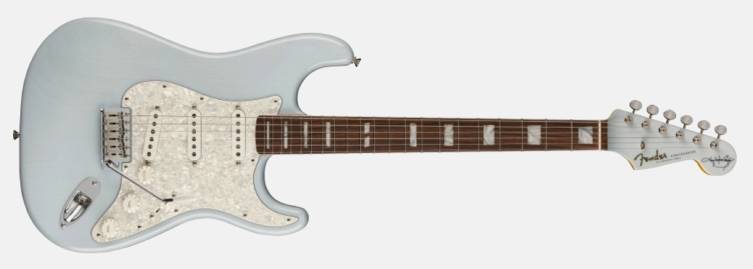
So anyways, appearance was a big factor due to the grain, but also ash is heavy! And they put more restrictions on the type of ash that can actually be used and so a lot of the ash that they’re allowed to use is really dense and heavy. We wanted to make it more resonant and we wanted to make it lighter because nobody wants to feel like their guitar is causing them back problems. When you play one of these guitars acoustically, without plugging it onto an amp, the sound projects from the instrument, and that’s an instantly recognisable feature of the guitar as well.
So all of these things, the sum of all the components, really makes for a compelling instrument. It’s a beautiful guitar. My goal was to create a guitar that looked like it came from the Custom Shop. They’re buying an American made Strat - which, I mean, is a premium price - but it’s not a Custom Shop price. And the quality is pretty impeccable.
Strings and Picks
GG: It is an interesting blend: the colour does remind me of the Mary Kaye Strats, but you’ve got the block inlays which is heritage Fender, but not on that type of guitar. Now, what about strings? Are you a 10-46 guy?
KWS: No, my usual gauge is 11 through 58. But what I’ll do is, let’s say we finish a tour, right? I have six kids at home with my wife, so when I’m at home, I’m not just sitting around playing guitar all day, every day (laughs). So, I’ll lose my callouses, oftentimes when we have a break, so then I have to build them back up. If I'm in that process, I can start at tens for the first two weeks, and then we’ll move up to ten and a half, and then eventually get back up to the elevens once my fingers are back in shape.
But I prefer the 11-58 because I found that going from nines to tens, tens to elevens, there’s a noticeable reward in sound, for what I’m going for. The effort is worth it: the extra effort it takes to play elevens, you get it back in tone. But going from elevens to twelves and thirteens, it was diminishing returns. It could feel like a lot of effort for very little payoff.
I have to have the 58 on the bottom E because I hit so hard that if I use anything lighter than a 58, it goes noticeably sharp when I hit it. I need something with so much tension that it’s gonna stay in tune when I hit it.
GG: Holy shit! So what about picks?
KWS: I use heavy. Sometimes, depending on the song, I’ll change it up. More if I’m in the studio when the pick attack makes a difference Live, I usually just use a regular heavy gauge tortoiseshell-style pick. Nothing special there!
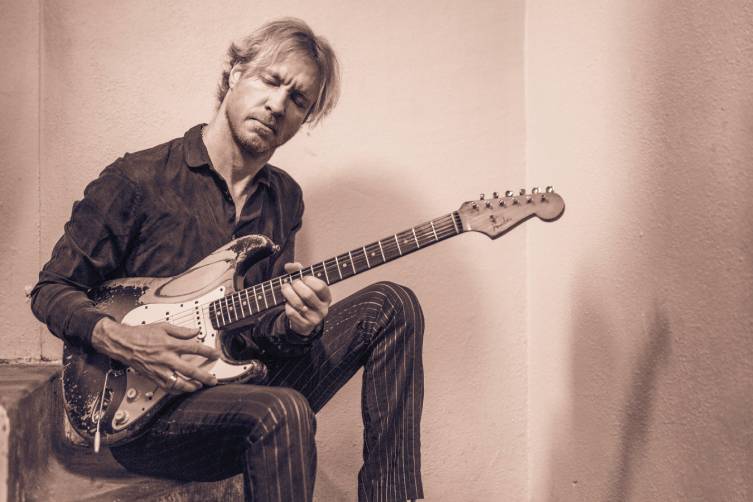
(Photo: Jim Arbogas)
Playing Tips from Kenny
GG: So, before we finish up, I just have one or two more questions. For other players out there who want to inject a little special sauce into their own guitar playing, have you got any tips that you can pass on?
KWS: Well, I feel like first of all, you figure out what you do well. Well, the first thing is, you learn from the people you like, so your heroes and influences, things like that. The first thing people do is learn something note for note, and that’s fine and always a good starting point. But then you need to figure out how to take that and somehow change it up and make it your own. That’s how you start to evolve into being your own player.
I can take a Jimi Hendrix lick and go ‘wow, that’s really cool how he played it’ but I’m gonna play it, and change this and this and this about it, and it becomes a Jimi Hendrix-inspired Kenny Wayne Shepherd lick, you know what I mean? That’s really the key to learning how to make things your own: it’s just taking things your influences have done and figuring out how to re-interpret them with your own personality and your own sound.
Figure out what you do best and then really lean into that. I’ve found that there’s guys that can play way faster than me and there’s guys that have way more of a vocabulary than I do on guitar, but what I’ve found that I do really well is I’m about to channel emotion into what I play. I can really project internal feelings through my instrument and give that to the listener. So I figured out that’s one of the things I do best and something I really started to hone in on, because I wanna make people feel what I’m playing, right? I figured out that that’s what I do well so I’m gonna lean into it.

Now that is some good advice! Kenny Wayne Shepherd’s brand new record, Dirt on My Diamonds Vol.1 is released on 17th Nov. Head over to the official Kenny Wayne Shepherd website for more news on that, and his forthcoming tour.
I’d like to thank Kenny for giving me some time during a busy day, and to Lee Puddefoot for putting us in touch.
For more interviews, including exclusives with Joe Bonamassa, Amanda Shires and Guthrie Govan, please head across to the guitarguitar Interviews page. More soon!


